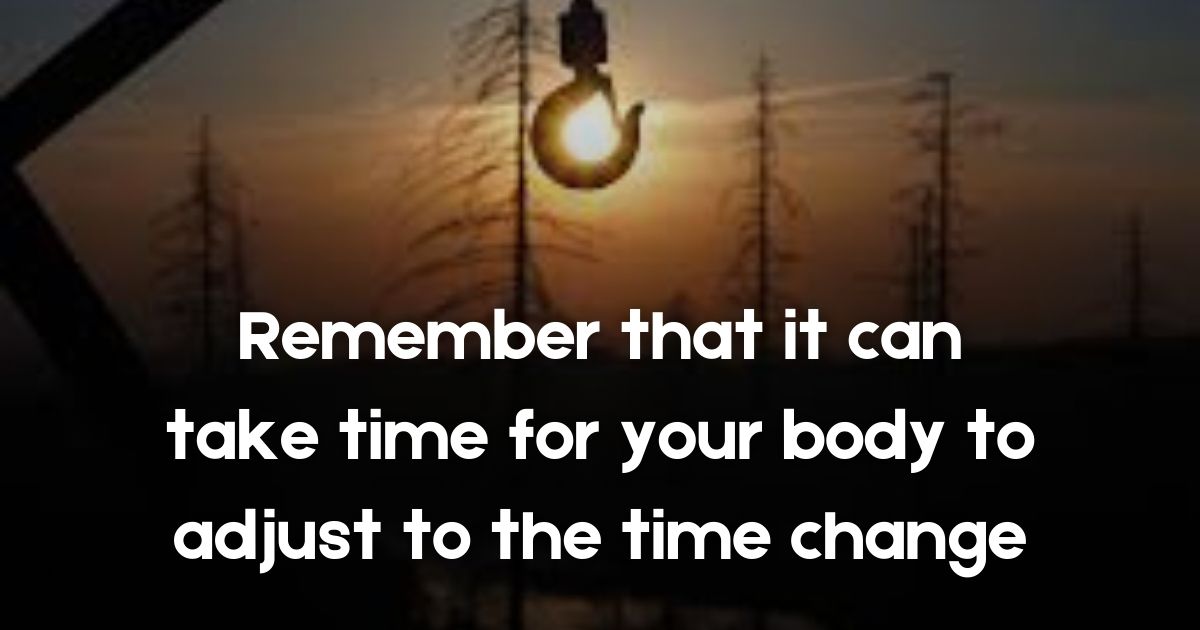
Daylight Savings Time (DST) is a practice that many countries follow to make better use of daylight during the longer days of spring and summer. Each year, we set our clocks forward in spring and back in fall. While some people enjoy the extra hour of daylight in the evening, adjusting to the time change can be difficult for many. In this article, we will explore what Daylight Savings Time is, why it exists, and provide tips on how to adjust to the time change smoothly.
What is Daylight Savings Time?
Daylight Savings Time is the practice of moving the clock forward by one hour in the spring and setting it back by one hour in the fall. This means that, in spring, people “lose” an hour of sleep but gain an hour of daylight in the evening. In the fall, they “gain” an hour of sleep as the clocks go back, but the days become shorter.
In most places in the United States, Daylight Savings Time starts on the second Sunday in March and ends on the first Sunday in November. Many other countries also follow this practice, although the exact dates may differ.
Why Do We Have Daylight Savings Time?
The main idea behind Daylight Savings Time is to make better use of daylight during the longer days of summer. Here are some reasons why it was introduced:
- Energy Savings: One of the original reasons for DST was to save energy. By having more daylight in the evening, people would use less electricity for lighting and heating.
- More Daylight for Activities: With more daylight in the evening, people have more time to enjoy outdoor activities after work or school. This can lead to more exercise and family time.
- Economic Benefits: Longer daylight hours can encourage people to shop, dine out, and engage in other activities that help businesses.
- Safety: More daylight during peak hours can lead to fewer accidents. For example, it is safer for children walking home from school in daylight than in darkness.
The Challenges of Adjusting to Daylight Savings Time
While the idea behind Daylight Savings Time may be good, adjusting to the time change can be a challenge for many people. Here are some common problems people face:
- Sleep Disruption: Losing an hour of sleep in spring can make people feel tired and sluggish. It may take several days for the body to adjust to the new schedule.
- Mood Changes: The time change can affect mood and energy levels. Some people may feel irritable or down as their bodies adjust.
- Health Effects: Studies have shown that the change can lead to an increase in heart attacks, strokes, and accidents in the days immediately following the time change.
Tips for Adjusting to the Time Change
To make the transition to Daylight Savings Time easier, here are some helpful tips:
1. Start Adjusting Your Schedule Early
A few days before the time change, try adjusting your schedule by going to bed and waking up 15 to 30 minutes earlier each day. This gradual change can help your body adapt more easily to the new time.
2. Create a Relaxing Bedtime Routine
Establishing a calming routine before bed can help signal to your body that it’s time to wind down. This might include reading a book, taking a warm bath, or practicing relaxation techniques like deep breathing.
3. Limit Screen Time Before Bed
The blue light emitted by phones, tablets, and computers can interfere with your sleep. Try to limit screen time for at least an hour before bed. Instead, engage in calming activities that do not involve screens.
4. Be Mindful of Your Diet
What you eat and drink can affect your sleep quality. Avoid large meals, caffeine, and alcohol close to bedtime. Instead, opt for light snacks that promote sleep, such as bananas or warm milk.
5. Get Plenty of Natural Light
After the time change, spend time outdoors during the day. Natural light helps regulate your body’s internal clock and can improve your mood and energy levels. If possible, take a walk during your lunch break or enjoy time outside after work.
6. Stay Active
Regular exercise can help improve your sleep quality and boost your mood. Aim for at least 30 minutes of physical activity most days of the week. If you’re feeling sluggish after the time change, try to get moving—exercise can help wake you up.
7. Naps Can Help
If you find yourself feeling tired after the time change, short naps can be beneficial. A 20-minute nap can help refresh your mind without making you feel groggy. However, avoid long naps late in the day, as they may disrupt your nighttime sleep.
8. Stay Hydrated
Dehydration can make you feel tired and sluggish. Drink plenty of water throughout the day to stay hydrated. Try to limit caffeinated and sugary drinks, especially in the afternoon and evening.
9. Be Patient with Yourself
Remember that it can take time for your body to adjust to the time change. Be patient and give yourself time to adapt. If you continue to struggle with sleep or energy levels after a week or two, consider speaking with a healthcare professional for further advice.
10. Practice Good Sleep Hygiene
Creating a comfortable sleep environment can also help you adjust. Keep your bedroom cool, dark, and quiet. Invest in comfortable bedding and consider using blackout curtains or a white noise machine if necessary.
The Impact of Daylight Savings Time on Society
Daylight Savings Time has sparked debates over its benefits and drawbacks. Some people love the extra hour of daylight in the evening, while others argue that the time change disrupts their lives. Here are some thoughts on its impact on society:
- Economic Effects: Some studies suggest that businesses benefit from the extended daylight in the evening, leading to increased consumer spending. However, others argue that the disruption in sleep can decrease productivity in the days following the time change.
- Health Considerations: There is ongoing debate about the health effects of Daylight Savings Time. While some studies show a temporary increase in health risks right after the time change, others point to the benefits of increased daylight for mental health and physical activity.
- Global Perspectives: Not all countries observe Daylight Savings Time. Some regions have chosen to abolish the practice altogether, citing the confusion and disruption it causes. As the world becomes more interconnected, this raises questions about the future of timekeeping practices.
Conclusion
Daylight Savings Time can be a challenging transition for many people, but with the right strategies, it can be managed successfully. By gradually adjusting your schedule, creating a relaxing bedtime routine, and staying active during the day, you can make the time change easier on yourself and your family.
As we move through the seasons, it’s essential to consider how changes in time affect our lives, health, and society. Whether you love or hate Daylight Savings Time, understanding its impact can help us navigate the challenges it presents.
In the end, remember that Daylight Savings Time is just one part of our ever-changing world. By taking care of ourselves and supporting each other, we can make the most of the extra daylight and enjoy the beauty of each season. So, when the clocks change, embrace the new schedule with open arms, and don’t forget to enjoy the extra sunshine!




